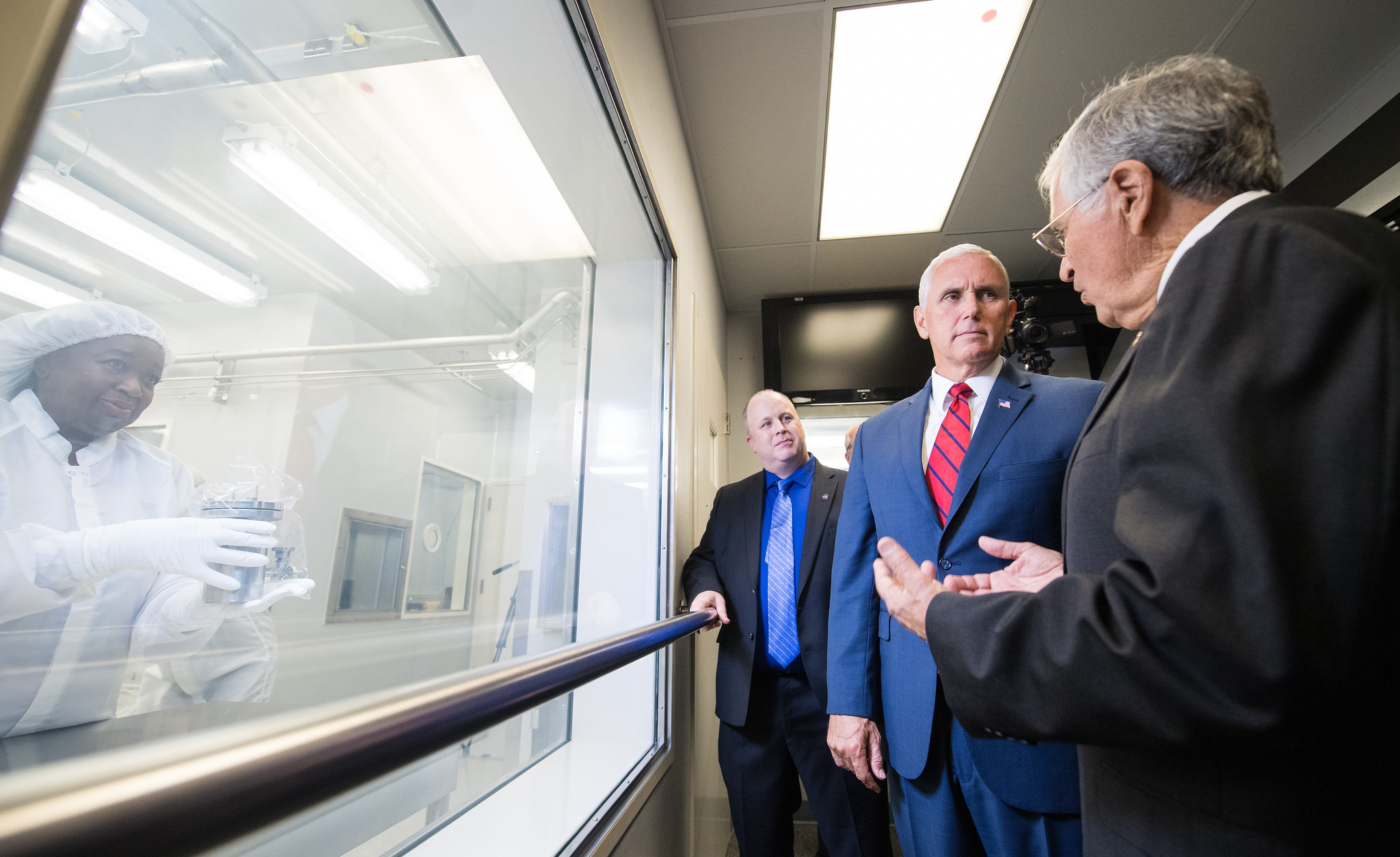The Trump administration has established NASAs main human spaceflight goal as a sustainable human return to the Moon, with eventual human missions to Mars. During what amounted to a pep talk at Johnson Space Center in Houston on Thursday, Vice President Mike Pence reiterated his commitment to this goal.
“Were also renewing our national commitment to discovery and to exploration and to write the next great chapter of our nations journey into space,” Pence said. “NASA will awe the world with our daring heroes.”
Unfortunately for presidents who serve at most two four-year terms, government spaceflight during the modern era moves at a glacial pace. No astronauts will walk on Mars during Trumps presidency or even on the Moon. Past presidents with ambitions for the Moon, Mars, or asteroids have faced similar conundrums because it takes so long to arrange funding for these plans, finalize designs, build and test, and finally to fly. Long before astronauts take flight, a new administration moves into the White House.
However, during his speech Thursday, Pence revealed the White Houses plan to return to the Moon during the Trump presidency. Assuming Trump wins a second term (admittedly, we are treading into the theoretical weeds here), NASA would have until the end of 2024 to “return to the Moon.” That is why the following line from Pences speech is significant.
“Our administration is working tirelessly to put an American crew aboard the lunar orbital platform before the end of 2024,” Pence said Thursday to a capacity audience inside Teague Auditorium on the space center campus.
Is it doable?
Putting humans on board a Deep Space Gateway in orbit around the Moon would represent a new and novel achievement for NASA. During the Apollo program, crews may have orbited and landed on the Moon, but they never stayed longer than a few days. The crew of Apollo 17 spent the most time at the Moon: 6 days and 3 hours, totaling over 75 orbits.
Aboard the Gateway, astronauts could spend weeks or even months in close proximity to the Moon, providing humanity a base camp for visits down to the lunar surface or, much later, Mars. With people near the Moon, NASA could also plausibly claim that it had taken a first step along a sustainable path of human exploration to the Moon, Mars, and beyond.
In short, it would be a notable achievement in space for the Trump administration. But is it doable?
After Pences speech, NASA administrator Jim Bridenstine and the director of Johnson Space Center, Mark Geyer, met with a handful of reporters. Ars asked the pair if a timeline of 2024, barely more than six years from now, would be realistic.

“Thats the objective, and I think we can accomplish it,” Bridenstine said. “When you think about launching SLS and Orion, we have to get the first flight in 2020. We have to make sure a couple of years thereafter were going to be launching the power and propulsion system for the Gateway, and a year after that were going to be launching habitation. At that point, well be ready to put American astronauts in orbit around the Moon on the first station ever to be built and placed in orbit around the Moon.”
This timeline raises a number of significant questions, perhaps most notably about the rocket NASA is counting on to help assemble the Gateway. Although an initial version of the Space Launch System (SLS) rocket will be ready by the early 2020s, NASA needs an upgraded version of the SLS rocket known as Block 1B to complete a station in lunar orbit.
Significant questions
The key SLS upgrade is a new upper stage called the Exploration Upper Stage. This will require four or five years (and billions of dollars) to build and test. Geyer confirmed that NASA needs the more powerful variant of the SLS in order to launch both the Orion spacecraft, with crew, and a habitation module at the same time. The habitation module cannot be launched on its own because it does not have its own power, attitude control, and other components of a spacecraft bus.
Therefore, before a crew can visit and live aboard the Deep Space Gateway, NASA will need an upgraded SLS rocket. It is accurate to say that, privately, many engineers at NASA and outside the agency have a healthy skepticism about the readiness of the Block 1B by 2024.
In addition to the rocket, NASA must also build the Gateway itself. For now, the Gateway remains a theoretical construct with no hardware yet designed or metal cut. To be ready by 2024, NASA must soon lock in a design for the Gateway elements, including power and propulsion systems, a habitat module, an airlock, and more. NASA is still setting requirements and taking proposals from vendors for these components. With none of this firmed up, NASA would need to move quickly to finalize its requirements, select firms to build the components, complete that work, and ready everything for launch.
Perhaps that was one of the spurs for Pences visit to Johnson Space Center, although the trip to the Houston area served primarily to support the campaigns of Republicans in Texas running for Congress. To his packed audience in Teague Auditorium, Pence exhorted the space agency workforce to push forward with greater urgency.
“So today, I just simply want to leave you with a challenge,” he said. “As we write this new chapter of American exploration, I urge you to embrace this new energy and these new opportunities. Rededicate yourselves to the mission of NASA after you leave here today.”
It will take considerable dedication (and funding) if NASA is to fulfill the Trump presidencys wish to return to the Moon before the end of 2024.
[contf] [contfnew] 
Ars Technica
[contfnewc] [contfnewc]






